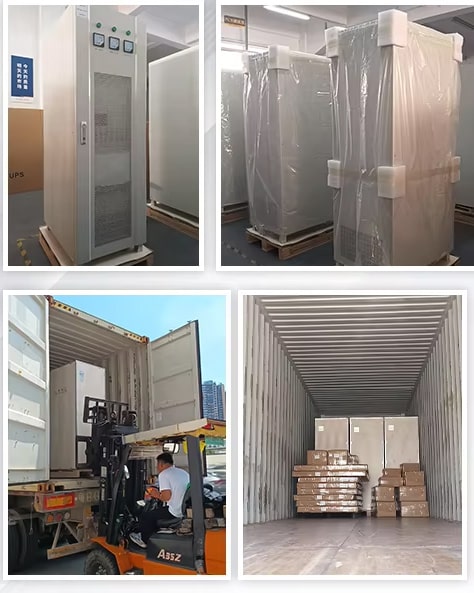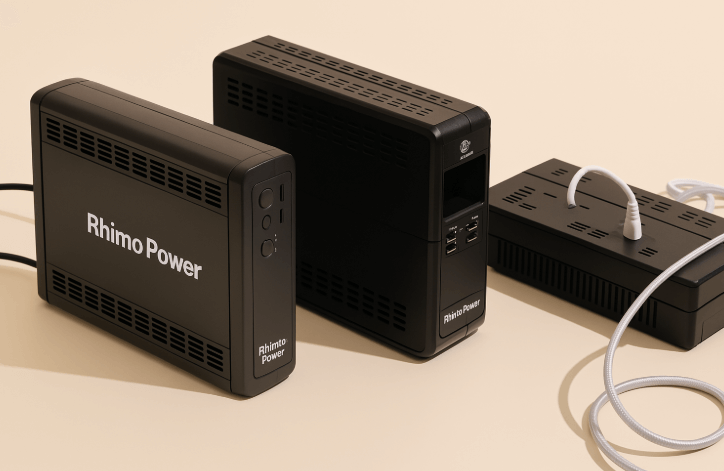Shipping a UPS (Uninterruptible Power Supply) unit, whether it’s a small line-interactive system or a large modular online UPS, involves careful planning and execution. Due to the weight, sensitive electronics, and potential battery hazards, UPS shipping is a specialized logistics task handled by professionals using robust packaging methods and transportation protocols.

1. Preparation Before Shipping
- Inspection: Units undergo visual and functional inspection before packing to ensure there is no damage or defect.
- Battery Management: In some cases, especially for lithium-ion batteries, the batteries are shipped separately or in compliance with hazardous material regulations.
- Documentation: Includes shipping labels, MSDS (Material Safety Data Sheets), user manuals, and compliance certificates (e.g., CE, UL).
2. Packaging Options Based on UPS Size
- Small & Mid-sized UPS (1–10 kVA):
- Packed in double-layered corrugated cartons with foam inserts.
- Wrapped in anti-static bags to prevent ESD (electrostatic discharge).
- Secured on wooden or plastic pallets for forklift handling.
- Large Modular or Industrial UPS (20–500+ kVA):
- Mounted on shock-absorbing skids or vibration-isolated bases.
- Enclosed in custom-built wooden crates or ISO shipping containers.
- Equipped with humidity indicators, tilt sensors, and shock loggers.
3. Transport Modes
- Road Transport: Common for domestic deliveries. Trucks with lift gates and air-ride suspensions are used to reduce impact during travel.
- Sea Freight: Ideal for large-volume or international shipments. Units are containerized and loaded onto cargo ships with proper bracing to prevent movement.
- Air Freight: For urgent or high-value shipments. Batteries may be restricted or require special packaging (per IATA guidelines).
4. Handling and Installation
- Unloading: Requires forklifts or cranes depending on the UPS weight. Lift points are marked clearly on containers or frames.
- Staging: Before installation, UPS units are staged in a temperature-controlled environment to stabilize.
- Professional Installation: Many vendors provide white-glove service including unpacking, system setup, battery connection, and commissioning.
5. Risk Management and Safety
- Labeling: All packages are labeled with handling instructions, including “Fragile,” “Keep Upright,” “Do Not Stack,” and battery hazard warnings.
- Fire Safety: For lithium-ion batteries, special containers with fire-retardant insulation and venting systems are used.
- Insurance: High-value UPS shipments are often insured against transit damage, loss, or delay.
6. Regulatory Compliance
- IATA & ICAO: Governs air shipping of lithium batteries (e.g., packing instruction 965/966).
- IMDG Code: Required for maritime transport of dangerous goods.
- Customs Clearance: Includes tariff codes, origin certificates, and compliance declarations.
7. Environmental Considerations
- Use of reusable packaging or eco-friendly materials to reduce waste.
- Proper documentation and channels for end-of-life battery recycling or disposal as per WEEE directives.
Conclusion
Shipping UPS units is a high-stakes task requiring a blend of mechanical handling, regulatory knowledge, and environmental control. Logistics providers specializing in electronics or heavy equipment must take into account the physical, legal, and operational nuances of transporting power infrastructure equipment like UPS systems. Proper execution ensures reliability, safety, and minimal delays in deployment.

